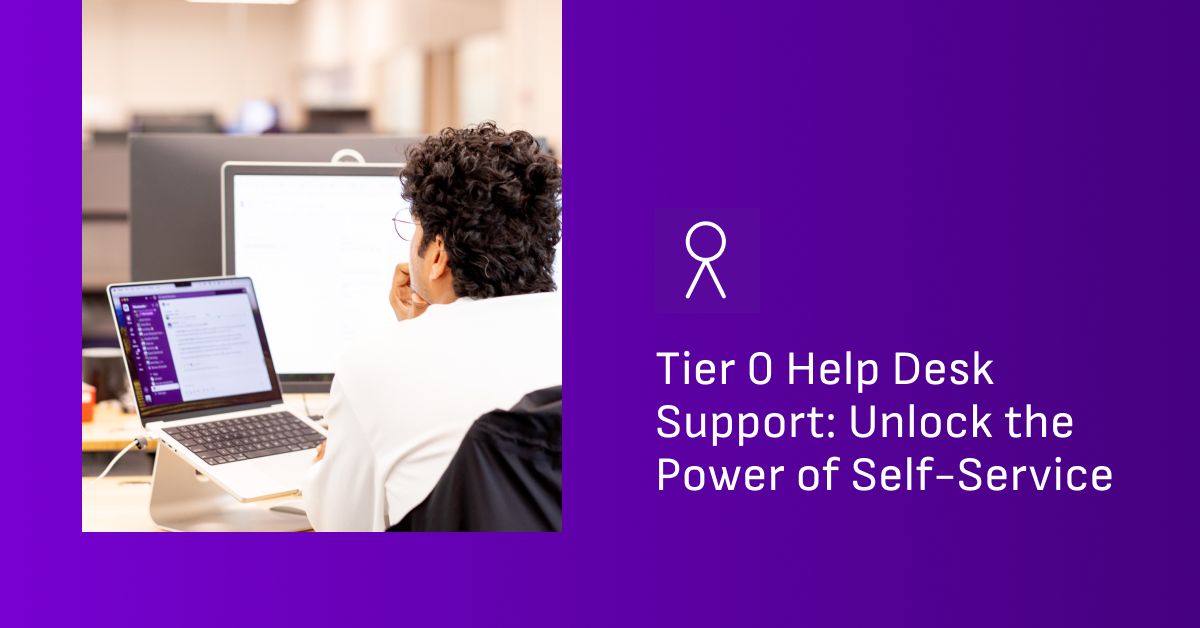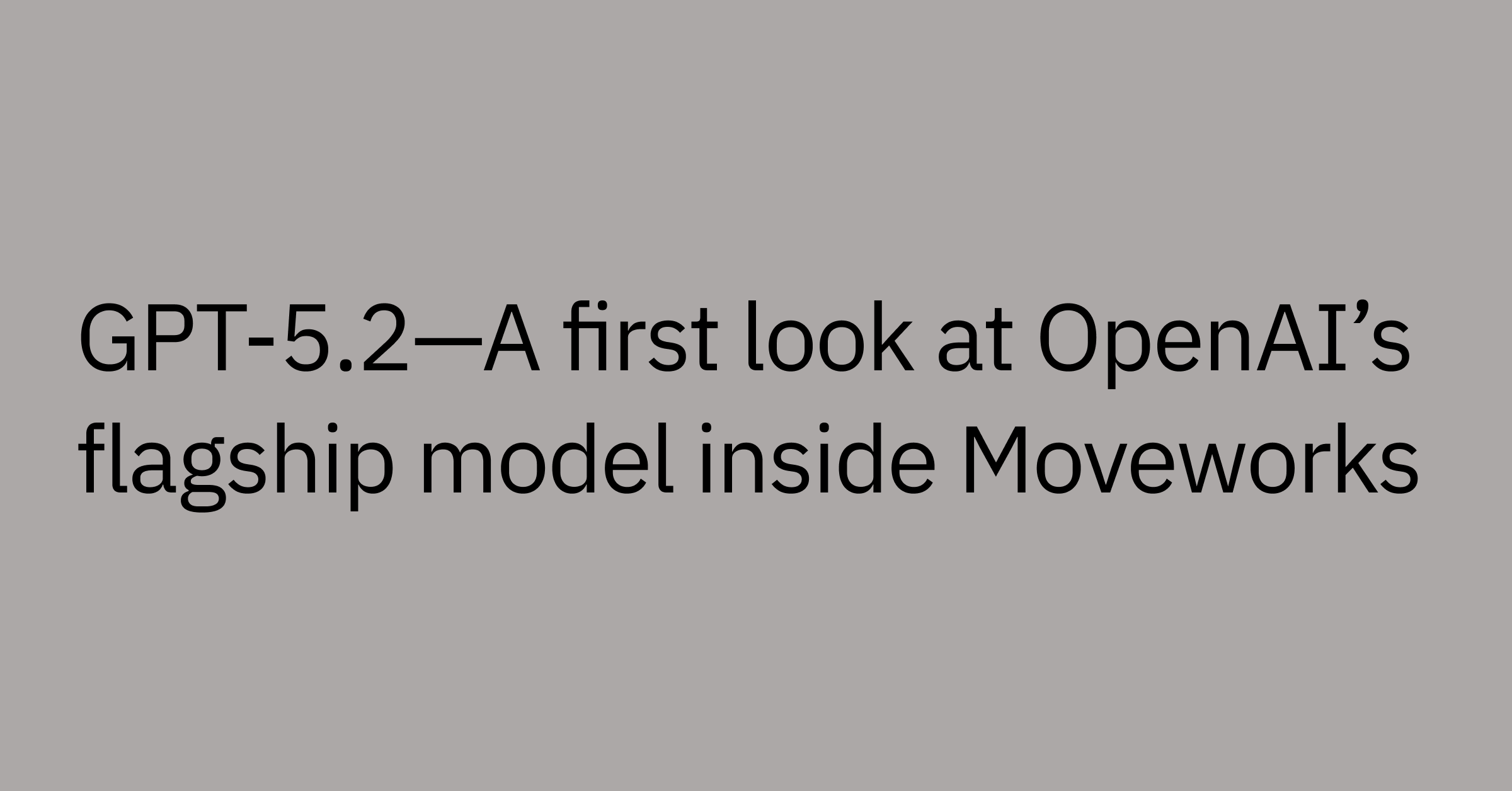Table of contents
Highlights
- Tier 0 support empowers employees to solve issues independently using AI-powered self-service tools and conversational interfaces.
- It addresses high-volume, repetitive questions before they become tickets—accelerating resolution and reducing IT and HR workloads.
- AI assistants integrate knowledge bases, enterprise search, and automation to deliver accurate, context-aware answers instantly.
- The result is faster time-to-resolution, consistent service quality, and more capacity for IT and HR to focus on strategic priorities.
- Moveworks provides comprehensive Tier 0 automation, resolving common issues in chat while maintaining visibility across systems.
Ever been up against a tight deadline, only to get held back by missing information or some type of technical issue?
Everything grinds to a halt, and suddenly, a frustrating backlog starts to build.
When your employees face these kinds of roadblocks, their first instinct is often to reach out for help.
Maybe they send an email, hoping for a quick reply from IT. Or, more commonly, they go on a scavenger hunt, looking through scattered intranet resources or self-service portals, hoping to stumble onto what they need.
In either scenario, that time spent waiting for an email response or manually digging for company information costs your business valuable time and resources. This is where AI-powered tier 0 support can make a difference.
Research shows that using AI-driven help desk solutions within HR and IT departments can increase employee productivity up to 40%.
By moving away from static knowledge bases and incorporating intelligent, agentic solutions into your help desk, you can give your teams the on-demand support they need to resolve their issues instantly, 24/7.
What is tier 0 help desk support?
When we say tier 0 support, we’re talking about self-service solutions which are typically digital self-service portals, peer-to-peer support forums, or AI support agents, allowing users to quickly resolve their needs independently
The goal of tier 0 is to address simple, repetive issues and requests without the involvement of service desk agents.
To this end, these self-service solutions make it easy to find and discover FAQs, documentations and trouble-shooting guides, while chatbots and AI assistants can provide real-time answers to employees or with more advanced AI systems can surface info from resources spread across your company's systems and databases.
Tier 0 positions itself seamlessly into ITSM support level frameworks:
- Tier 0 support: Self-service support layer focused on information and guidance, like looking up information about company holidays, troubleshooting a common issue, or pulling up a quarterly report.
- Tier 1 support: First level of active issue resolution, where support tools or agents help complete actions that go beyond self-service, like initiating a password reset or reconfiguring an account.
- Tier 2 support: Higher level of agent-guided support requiring more technical knowledge from experienced support personnel who can investigate complex problems, like why a user can’t access a system despite correct credentials.
- Tier 3 support: Highest level of support requiring deep expertise from in-house or external sources. This could include requests like rewriting backend code to fix a bug in a proprietary application or performing root cause analysis of a critical production outage.
How does tier 0 help desk support improve self-service?
Tier 0 support gives your employees the tools and resources they need to accomplish their tasks effectively. But it's more than just a self-service portal, forum, or chatbot — it also empowers them to get fast and relevant support when and where they need it most.
Self-service portals enable employees to independently access information and tutorials, while forums allow for community-driven problem-solving.
Chatbots or assistants, powered by AI with natural language processing (NLP), facilitate real-time interaction by understanding and responding to employee requests, often integrating across organizational knowledge sources.
These solutions let your employees get answers more quickly, troubleshoot minor tech issues, or locate essential documents without needing to wait for a ticket response.
How do different tiers of help desk support work together?
While distinct, your tier 0 and tier 1 support levels actually work hand-in-hand.
Tier 0 support is all about self-service. It gives your employees the tools and resources to resolve many common and even some more unusual issues independently.
For example, in HR, tier 0 can quickly provide access to vacation time or payroll details. However, a more complicated benefits enrollment question or a sensitive personal issue may require additional follow-up questions or dialogue before it can be resolved. This is where tier 1 would take over.
Similarly, in IT support, tier 0 can instantly resolve commonly experienced technical support issues or help with general troubleshooting. But tickets may need to escalate to tier 1 if an employee needs a password reset or access to a new system.
When these situations arise, AI-powered service desks can automatically escalate and route tier 1 inquiries to the appropriate agents, prioritizing tickets based on urgency, impact, and overall complexity.
What HR can learn from the IT help desk
While both your IT and HR departments provide essential employee support, their day-to-day demands are quite different.
IT support teams typically handle a more fixed set of hardware or software-related issues. HR inquiries tend to be more nuanced, since employee needs can vary significantly based on their location, role, or tenure.
A significant portion of HR knowledge is location-specific, as opposed to IT-related knowledge.
This means that given this diverse and regionalize nature of HR needs, adopting a tiered support system, much like what your IT department already uses, can be incredibly helpful.
Applying tier 0 support to HR requests means your employees can get immediate answers to frequently asked questions and basic concerns.
Whether they’re looking for information on their benefits plan, payroll details, or company policies, that automated first layer makes HR knowledge much more accessible and reduces unnecessary workload on your HR teams.
Real-world examples of tier 0 help desk support
Tier 0 help desk support can tackle a wide variety of common HR and IT issues, cutting out the wait time for employees to get the information or support they need.
HR
- Policy clarification: Instead of sending individual requests to HR, employees can use AI assistants to get clear, definitive answers on things like remote work guidelines, expense reimbursement policies, or leave request protocols.
- Employee-specific details: With a tier 0 HR support solution, your employees can instantly access their personal information, including PTO balances, pay stub details, emergency contact information, and other relevant employment data.
- Benefits and holiday inquiries: Whenever your employees have questions related to their health insurance coverage, retirement plans, or the office holiday schedule, all this crucial information is readily available through a tier 0 help desk.
IT
- General troubleshooting: A tier 0 help desk solution can provide employees with step-by-step instructions for solving common technical problems and even automatically execute pre-configured resolution steps without direct IT intervention.
- Software and VPN setup: Your IT teams can offload partitioning for new employees to tier 0 support solutions that handle automatic configurations and guide employees through device setup processes.
- System best practices: With a tier 0 help desk solution, employees get quick access to guidelines and internal standards they can reference when setting up new systems or configuring their login credentials.
AI tools that power self-service for tier 0 support
A major benefit of an AI-powered tier 0 platform is its ability to address hidden data silos that hold employees back.
By combining your help desk with natural language AI tools that understand context, your employees can get instant, relevant support services when needed.
But for a tier 0 support solution to work for your business, you’ll need the right tools and technology, including:
Knowledge resources
Big businesses handle hundreds, even thousands of IT and HR requests every month. Your teams likely already have resources that answer most of these questions — technical support materials, in-depth knowledge base articles, FAQ pages, forums, tutorials, product guides.
But are they continuously accessible, managed, and updated?
An AI knowledge base can help you ensure these resources are more current and relevant. Unlike static knowledge bases, AI-powered systems are able to continuously collect and analyze business information from various sources, automatically identifying and even addressing knowledge gaps as they appear.
Enterprise search
Another common issue with the resources we discussed above is that employees just don't know where to find them.
Enterprise search uses powerful AI tools to bring all of this critical business information together, making it easily discoverable and searchable for your employees.
These platforms feature a familiar user interface that lets your employees ask questions just like they would in an email or support ticket. But instead of waiting for a reply, they can leverage the system’s NLP technology, semantic search, and machine learning algorithms to get instant access to relevant information, making self-help a convenience, not a chore.
AI assistants
AI assistants are what make enterprise search solutions functional for employees. These virtual interfaces enable employees to access conversational AI tools directly from the applications they use each day, like Slack and Microsoft Teams.
With conversational AI, your employees get a highly personalized assistant they can turn to for efficient IT or HR self-support anytime they need it.
Because these tools feature natural language understanding (NLU), they can break down support questions or statements while accurately identifying an employee's search intent. This allows them to analyze each query in the context of past conversations to provide employees with the resources they need to resolve their issues.
Some modern tier 0 help desks take it a step further with agentic AI assistants that can provide more relevant answers and help to automatically take action to resolve issues too.
Imagine an employee wants to book PTO.
Instead of using pre-scripted boilerplate responses to queries, an agentic assistant is able to personalize answers to your employees, consider the employee’s country’s policy, check their PTO balance and better yet automatically submit the PTO request in your HRIS too without additional assistance.
Benefits of empowering self-service support
An efficient self-service support solution for your employees can deliver a wide range of benefits. AI-powered tier 0 support can help your organization:
Speed up time-to-resolution
Self-service support solutions are able to greatly improvetime-to-resolution metrics.
When employees have access to intelligent support features with integrated AI-powered automation, they can get help immediately. In many cases, employees won't even need to escalate their requests past tier 0. If they do, AI-powered ticket routing and categorization help ensure that the request gets answered and resolved quickly.
This also helps eliminate many of the frustrations and inefficiencies of manual ticket generation, prioritization, and ongoing backlogs.
Improve service consistency
Tier 0 support helps to standardize accurate responses to common questions for a more consistent employee experience across locations, channels, and departments.
AI-powered help desks also ensure that, regardless of the time zone your employees are in or their working hours, they can access critical HR or IT information 24 hours a day, 7 days a week.
Free up support staff for strategic work
By empowering your employees with a highly functional self-service support system, you can reduce your HR and IT teams’ workloads.
Instead of spending all their time answering common questions or helping with basic troubleshooting, these teams can focus on more strategic objectives.
Your business can direct more resources into critical areas, like digital transformation initiatives, security improvements, and enhancing workplace culture — while actually expanding employee access to support.
Support a multilingual, global workforce
If you have a global workforce, you probably already know the challenges of supporting multiple languages across IT and HR resources.
AI-enabled self-support solutions bridge this gap successfully. They can provide full multilingual support whenever your employees need it, creating a better employee experience regardless of location or native language.
Build a better enterprise-wide employee experience with self-service support powered by Moveworks
To maximize the benefits of a tier 0 support solution, it's important to select scalable integrations that can grow with your business. This means pinpointing your employees' everyday support needs and then deploying a combination of rich knowledge resources and advanced AI tools.
- Automate L0 with employee self-service: Revolutionize the support process with an AI Assistant that resolves employee issues, finds answers, files tickets, and tracks updates.
- Eliminate L1 support tickets: Free your help desk from L1 ticket queues and give them valuable time back to focus on bigger initiatives with autonomous resolution for the most routine and repetitive requests.
- Generate knowledge articles: Supercharge your employees’ ability to self-serve answers to common questions by generating knowledge articles based on your unique enterprise context and data
Movework provides comprehensive tier 0 self-support solutions, integrating within your current HR and IT ecosystems, and works seamlessly with the tools your employees already use.
And with a conversational agentic AI assistant that supports over 100 languages, your employees can get instant access to the exact resources they need — anytime, anywhere.
Ready to transform your employee experience with a fast, intelligent self-service solution? Get a free, personalized Moveworks demo today.



